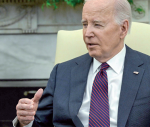You are here
The pandemic as a challenge and a chance for global media
Jun 06,2021 - Last updated at Jun 06,2021
In a crisis, information is essential and can be lifesaving. This also applies to the ongoing pandemic: Having access to trustworthy and reliable news is key to managing and fighting the COVID-19-crisis and its collateral effects. It impacts, for example, people’s willingness to take precautionary measures and their attitude towards vaccination. Therefore, we should care about how the media are coping with the repercussions of the current situation and what can help journalists as well as media outlets throughout the crisis.
So far, the COVID-19 pandemic has had contradictory effects on the media around the globe. It has led to new struggles and accelerated those developments that the sector had already been battling with, fostering issues such as digitalisation, the decline of print newspapers and financial precariousness with unprecedented speed. As Price Waterhouse Cooper (PWC) puts it in their “MENA Entertainment & Media Outlook 2020-2024”, the impacts of the coronavirus have “pulled the future forward”.
Journalists’ working conditions have been complicated by restrictions of movement and remote working regulations; reporting live from the field might put journalists as well as sources at risk of contracting the virus. In many countries, freedom of the press has been curbed under the pretext of emergency measures, as a global series by the European Journalism Observatory (EJO) highlights. In some countries, including Germany, journalists have faced increasing levels of threats and attacks from conspiracy theorists.
At the same time, the demand for news as well as the craving for entertainment has grown bigger than ever. While social media use has increased, users have also returned to traditional media: A USAID report finds that in March 2020, Jordanian Al Mamlaka TV had a viewership of 64 per cent as opposed to 5 per cent in December 2019, and Roya TV registered a 53 per cent viewership.
The New York Times’ coronavirus coverage had an unparalleled number of clicks and the newspapers’ online version attracted a record of 7.5 million new subscribers in 2020, as the New York Times stated in February 2021.
This moment thus presents a unique opportunity to reflect not only on the challenges but also the chances media is faced with and to find creative solutions for tackling negative long-term trends.
One such dynamic, warns the World Health Organisation (WHO), is the impending “infodemic”, an overabundance of disinformation, misinformation, and fake news around COVID-19 with serious impacts on public health responses as well as audiences’ behaviour. Media outlets have reacted by stepping up their fact-checking efforts. The Jordan Media Institutes’ Jordanian Media Credibility Monitor (AKEED) has detected that 31% of 569 rumours they debunked in 2020 were related to health. Not only in newsrooms and in journalism education must thorough fact-checking be mainstreamed. Of equal importance for countering fake news is the audience’s media literacy in distinguishing reliable from non-reliable sources, especially on social media — media education should be granted more attention in schools as well.
Quality reporting, however, requires journalists’ safety, including their financial security. Economically, the pandemic has been a heavy blow to the media industry. Ad slumps — such as a 26% decline of print advertisement in Italy in 2020 (EJO) — and the general economic downturn have resulted in staff lay-offs, reduced salaries, and short-term work. Innovative sustainable business models that are adapted to the challenges of the digital and online media market are urgently needed. This might include developing new formats, channels of distributions, or cooperation; and, on the side of donors, allocating funds to independent media. On national and global levels, stronger regulations for big Internet platforms are key.
What is more, the crisis bears the risk of deepening inequalities such as the digital divide. To ensure that all population groups are provided with essential information and have a voice in the media, diversity in the newsrooms should be prioritised. Access to information for marginalised groups like refugees, migrants, seasonal workers, and the poorest is important to make sure that they can be sufficiently protected from the virus, which in turn is necessary to protect society as a whole. Special attention should be paid to the side effects of the pandemic on already disadvantaged groups, including women — UN Women denounced a “shadow pandemic” of gender-based violence across the world as well as a push-back of women to the domestic sphere. Better representation of these groups in the newsrooms could help to make their voices heard.
Last but not least, COVID-19 raises awareness for the relevance of specialised approaches to journalism, especially science journalism that goes beyond reporting statistics of new infections or government regulations and aims at explaining complex issues to their users in a comprehensive and in-depth fashion. In its global scope, the crisis highlights the importance of cross-border reporting, too. Joining forces internationally, to develop high-quality contents and to tackle the intersecting challenges that confront the media, can help harness potential opportunities within the current crisis.
Johanna Mack is a PhD fellow in the Graduate School Medas21, researching Media Development. She has supported several international projects of the Erich Brost Institute for International Journalism in Dortmund, Germany, and contributed this article to The Jordan Times.












